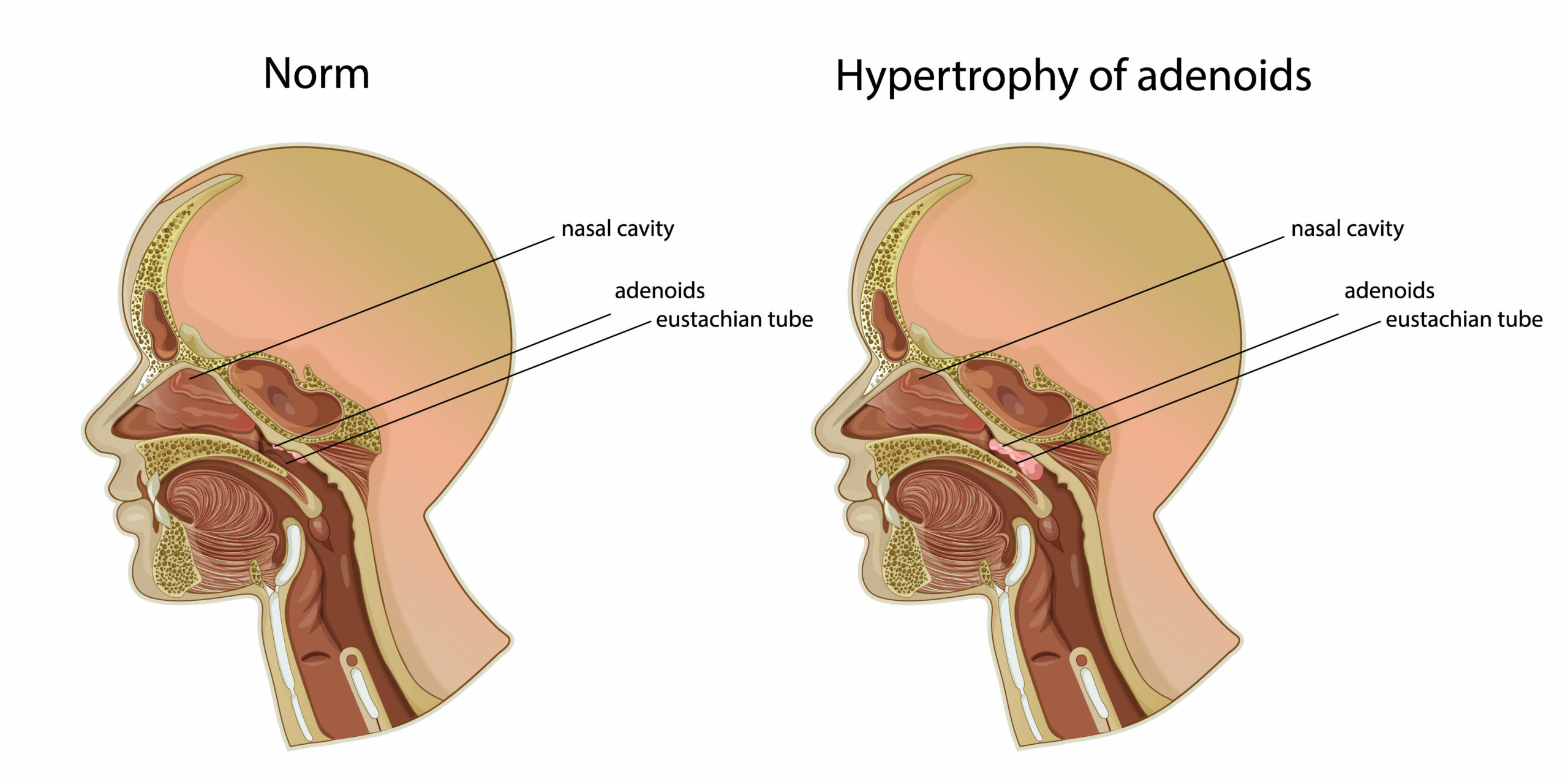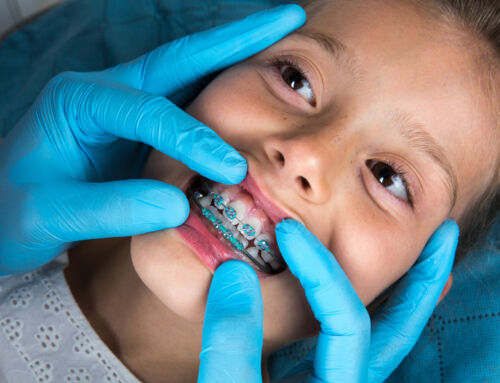Mouth breathing is a common issue in children, often overlooked because it seems harmless. However, persistent mouth breathing can lead to serious health concerns, including swollen adenoids. Adenoids are small patches of tissue located in the back of the nasal cavity that play a role in the immune system. When they become swollen, they can cause a cascade of problems, from sleep disturbances to facial development issues. Understanding the connection between mouth breathing and swollen adenoids is crucial for protecting your child’s health.
What Are Adenoids and Why Are They Important?
Adenoids are small, spongy patches of lymphatic tissue located in the upper part of the throat, just behind the nasal cavity. Together with the tonsils, they form part of the body’s immune system, acting as the first line of defense against bacteria and viruses that enter through the nose or mouth. In young children, adenoids are particularly active, helping to filter out harmful pathogens and produce antibodies to fight infections.
Adenoids play their largest role during early childhood, as the immune system is still developing and learning to recognize threats. They tend to grow larger during the preschool years, when exposure to germs is high, and typically begin to shrink around age five. By adolescence, adenoids often become very small or disappear entirely as other parts of the immune system take over.

While adenoids are essential for building immunity, their location near the nasal passages can cause problems when they become swollen or inflamed. Common causes of swollen adenoids include repeated infections, allergies, or chronic irritation from environmental factors like smoke or pollution. When adenoids enlarge, they can obstruct airflow through the nose, forcing children to breathe through their mouths. This can lead to a range of issues, from disrupted sleep to long-term effects on facial growth and speech development.
Understanding the role and potential problems associated with adenoids is key to addressing mouth breathing and its related complications early, before they impact your child’s overall health and development.
Why Does Mouth Breathing Occur?
Mouth breathing in children can result from several underlying causes, including:
- Chronic Nasal Congestion: Allergies, colds, or sinus infections may block the nasal passages, leading children to breathe through their mouths.
- Structural Issues: Problems like a deviated septum or a narrow nasal cavity can restrict airflow through the nose.
- Swollen Adenoids: When adenoids enlarge, they can obstruct the nasal passages, making it difficult for children to breathe through their noses.
The Link Between Mouth Breathing and Swollen Adenoids
Mouth breathing and swollen adenoids often create a vicious cycle. When a child breathes through their mouth instead of their nose, it dries out the airways, which can irritate and inflame the adenoids. Swollen adenoids, in turn, block the nasal passages, making it even harder for the child to breathe through their nose, perpetuating the mouth-breathing habit.
Signs Your Child May Have Swollen Adenoids
Swollen adenoids are not always easy to detect, but there are several signs parents should watch for:
- Persistent mouth breathing, especially during sleep.
- Snoring or noisy breathing at night.
- Restless sleep or waking up tired.
- Chronic nasal congestion without obvious causes like a cold.
- Difficulty swallowing or a muffled voice.
- Frequent ear infections.
The Impact of Mouth Breathing and Swollen Adenoids
Persistent mouth breathing and swollen adenoids can affect your child’s health and development in several ways:
1. Sleep Problems
Swollen adenoids can block the airway, leading to sleep-disordered breathing or even obstructive sleep apnea. This can cause poor-quality sleep, leaving children fatigued, irritable, and struggling with focus during the day.
2. Facial Development
Chronic mouth breathing can alter the natural growth of the face and jaws. Children who mouth breathe often develop a “long face” appearance, characterized by a narrow upper jaw, recessed chin, and open mouth posture. These changes can lead to misaligned teeth and bite issues.
3. Speech Delays
Mouth breathing can affect tongue posture, leading to speech difficulties. Children may struggle with articulation or develop a nasal-sounding voice due to obstructed nasal passages.
4. Frequent Infections
Swollen adenoids can block the Eustachian tubes, which drain the middle ear, increasing the risk of recurrent ear infections.
5. Cognitive and Behavioral Issues
Poor sleep quality due to mouth breathing and swollen adenoids can lead to problems with attention, memory, and behavior. Some children are even misdiagnosed with attention deficit disorders when the underlying issue is sleep disruption.
Addressing Mouth Breathing and Swollen Adenoids
If you suspect your child is a mouth breather or has swollen adenoids, early intervention is key. Here’s what you can do:
- Consult a Pediatrician or ENT Specialist
A healthcare professional can assess your child’s adenoids and determine the underlying cause of mouth breathing. They may recommend treatments like nasal sprays, allergy management, or in severe cases, adenoidectomy (surgical removal of the adenoids). - Orthodontic Evaluation
Mouth breathing and swollen adenoids can affect jaw and teeth alignment. Early orthodontic intervention, such as Myobrace, can guide proper jaw development and encourage nasal breathing. - Encourage Nasal Breathing
If nasal congestion is temporary, using a humidifier, saline sprays, or allergy medication can help open up the nasal passages and encourage nasal breathing. - Correct Poor Oral Habits
Myofunctional therapy can retrain oral muscles, teaching children to breathe through their nose, maintain proper tongue posture, and close their lips naturally.
Preventing Long-Term Issues
While mouth breathing and swollen adenoids are common in children, they should not be ignored. Early detection and treatment can prevent long-term complications, including facial changes, dental issues, and chronic sleep problems.
Get the Best Orthodontic Care for Your Child’s Mouth Breathing
At Ahava Orthodontics in Fort Worth, we specialize in addressing the effects of mouth breathing and swollen adenoids on dental and facial development. Our team provides early orthodontic solutions, including Myobrace, to guide proper growth and support healthy habits. If you’re concerned about your child’s breathing or oral health, schedule a consultation with us today. Together, we can ensure your child grows up with a healthy smile and better overall well-being.




